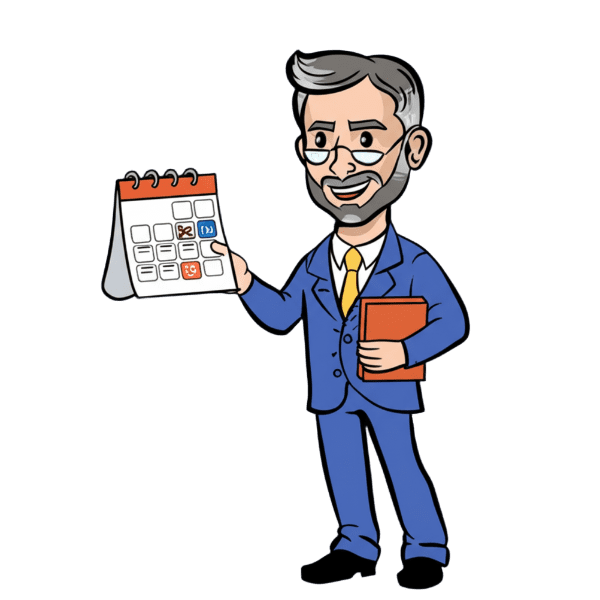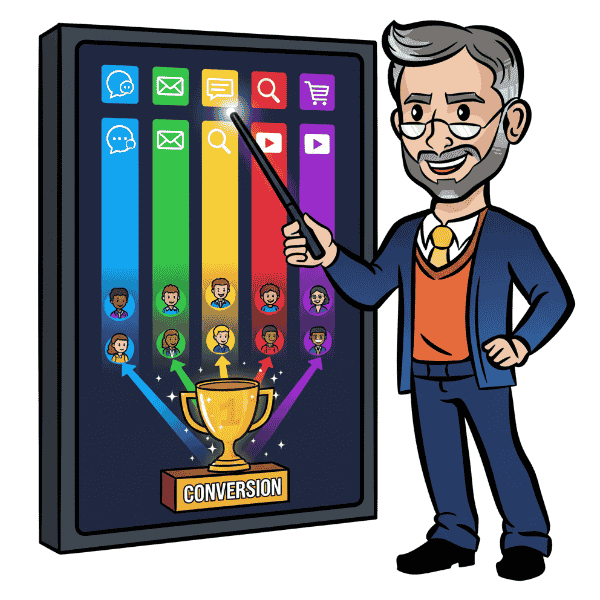Definition: Crosslinking is the practice of linking related content within your own website to improve user navigation, enhance SEO, and guide visitors through a logical content journey. These internal links help distribute authority across your site and keep users engaged longer by leading them to relevant resources.
Unlike backlinks, which come from external sites, crosslinks are internal and fully under your control, making them a powerful tool for content structure and funnel optimization.
Use It In a Sentence: We boosted our average session duration by 34% by implementing strategic crosslinking between blog posts and service pages.
Key Components of Crosslinking

- Anchor Text Optimization: Use descriptive, keyword-rich text to guide users and signal relevance to search engines.
- Content Relevance: Only link to pages that add value or context to the current topic.
- Strategic Placement: Insert links where users naturally seek more information or support.
- Hierarchical Structure: Link from high-traffic or pillar content to deeper subpages to distribute authority.
- Contextual Guidance: Use crosslinks to guide readers through your sales funnel (e.g., from blog to product).
Why Crosslinking Matters
- Improves On-Page SEO: Helps search engines crawl and understand your site structure.
- Boosts Engagement Metrics: Increases time on site and reduces bounce rates.
- Enhances Content Discovery: Encourages exploration of lesser-known or deeper content.
- Supports Funnel Progression: Seamlessly moves users toward conversion by linking content strategically.
How to Use Crosslinking Effectively
- Audit Existing Content: Identify opportunities to connect related pages.
- Create Content Hubs: Build pillar pages with supporting blog posts or service details.
- Use Smart Anchor Text: Choose anchor phrases that reflect the linked page’s purpose.
- Monitor Link Health: Check for broken or outdated links regularly.
- Balance Link Volume: Don’t overload a page—link only where it improves clarity or UX.
Improve Funnel Flow with Smart Crosslinking
Our Sales Funnel course shows you how to strategically crosslink content to create intuitive paths that improve SEO and increase conversions. Learn to optimize your internal linking for both users and search engines.
More Definitions
- Anchor Text: The clickable text in a hyperlink, which helps users and search engines understand what the linked page is about. Optimizing anchor text is key for effective crosslinking.
- Funnel Mapping: The process of visually outlining your funnel stages to identify where internal links can guide users more effectively.
- Click-Through Funnel: A streamlined series of steps that guide users toward a goal using targeted internal links.
- Keyword Clustering: Grouping related keywords to target multiple search queries with one page.
- Funnel Metrics: Performance indicators that help track user movement across funnel stages—strong crosslinking improves these metrics.
- Keyword Cannibalization: When multiple pages on a website target the same keyword, causing them to compete against each other in search rankings.
- Sales Cycle: The series of predictable stages a prospect goes through, from initial contact to closing a deal.
Useful Blogs
- The Marketing Funnel: Stages, Strategies, & How to Optimize: Understand each funnel stage and how crosslinking improves user flow between them.
- What Is a Funnel Builder?: Learn about tools that support internal linking and structural content planning.
- CRM Data Tracking for Your Sales Funnel: Discover how internal links can direct leads to CRM-capturing pages.
- Building a B2B Sales Funnel: The Step-by-Step Guide: See how crosslinking helps build logical, user-centric funnel paths.
- Learn How Weighted Funnels Can Help Your Business: Understand how strategic linking boosts performance across funnel stages.























